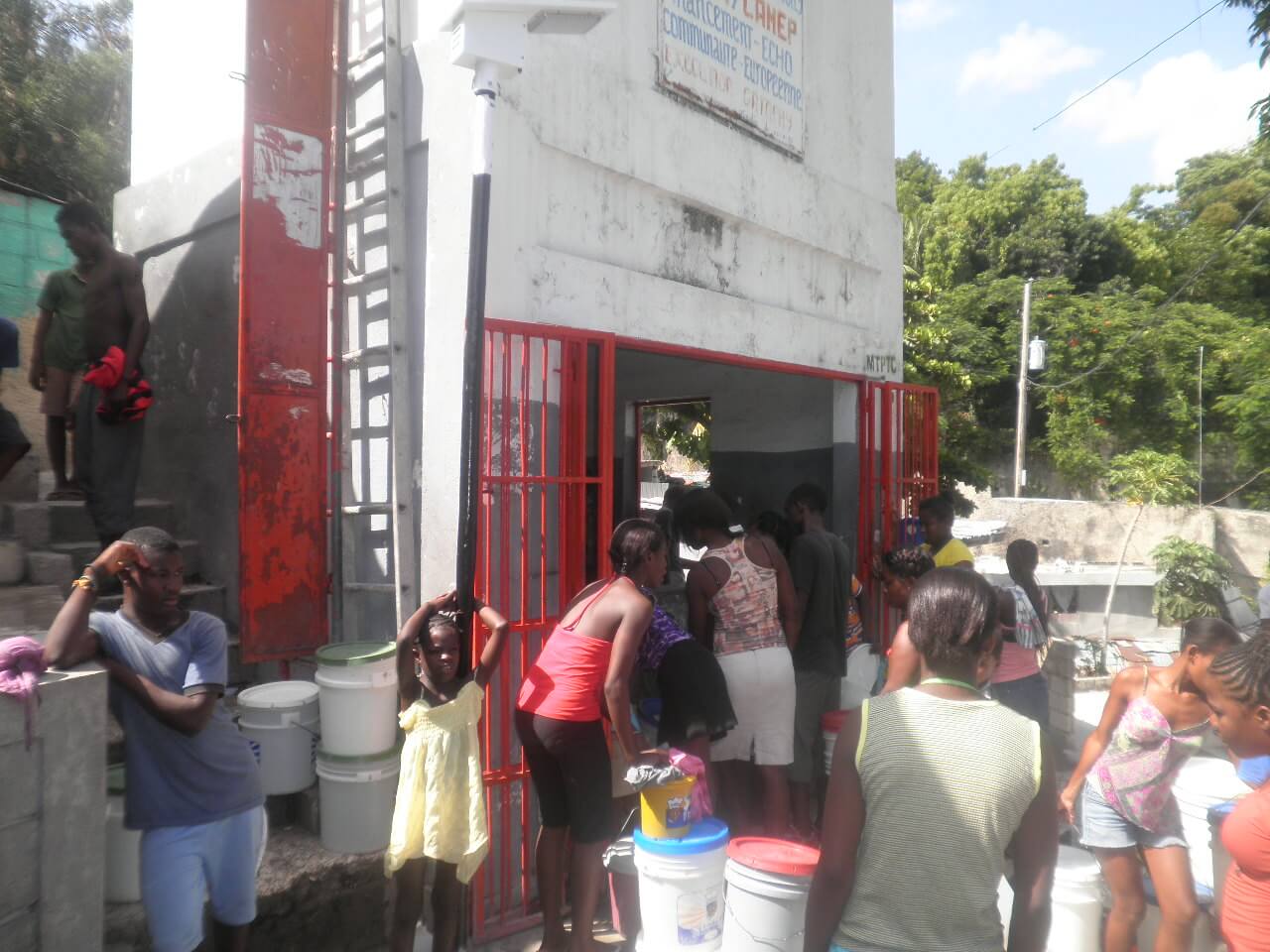Jeff Sejour and Zach just returned from Haiti: They found that most neighborhoods in Haiti are operating their own water stations and chlorinators independently and successfully. However, International Action delivers the chlorine tablets, which the chlorinators need to work. There are no distribution centers for chlorine tablets in Haiti besides International Action. There are tablets available at an import-export company, but they are sold individually at a very expensive rate.
Local leaders and residents alike want to distribute chlorine without relying on an outside group. They want to operate a local chlorine distribution system. We call this system the Chlorine Bank Network. We need $40,000 to start the Chlorine Bank Network in Port-au-Prince.
The Chlorine Bank Network works as follows: There is a central chlorine bank — located in Port-au-Prince — and branch banks throughout Haiti. The central bank imports chlorine tablets in bulk (when you buy in bulk, it is cheaper). Then, the central bank distributes the chlorine tablets to the various branch banks. Finally, community leaders purchase chlorine tablets – from the closest chlorine bank — for their neighborhood chlorinator.
The chlorine banks must be held accountable for a fixed chlorine tablet price. When International Action turns over the Chlorine Bank Network to the bank staff/communities, a city-wide Chlorine Bank Network Board will be formed. Each community that buys chlorine tablets from the Chlorine Bank Network will have a representative on the board. This Chlorine Bank Network Board will set the price of chlorine — the price cannot be changed solely by the staff at each chlorine bank.
International Action will pay for the chlorine until the chlorine banks are selling enough chlorine to pay for the chlorine themselves.
The chlorine is very affordable – $16 a month for a community of 1,100 people to have clean, safe water.
People are charged a small amount of money by the water station (1 to 10 US¢ depending on the site) for every bucket they fill. Some of this money is used by the community leaders to buy more water, and the rest goes to other community needs. Community leaders and residents agree that clean, safe water is essential.
The president of Mont Jollie, Billy Osbene, summarizes how many community leaders and residents feel:
“We have wanted this chlorine bank for a long time. Now is the time to move forward.”
We are glad that the community reaction has been positive. We have begun working with community leaders to find locations for chlorine bank branches. There will be four banks in Port-au-Prince. Each bank costs $10,000 to build, supply, and staff.
The question is not “will the Chlorine Bank Network happen?” The question is “when?” Haitians want the Chlorine Bank Network. They have the tools to begin, they just need the support.

